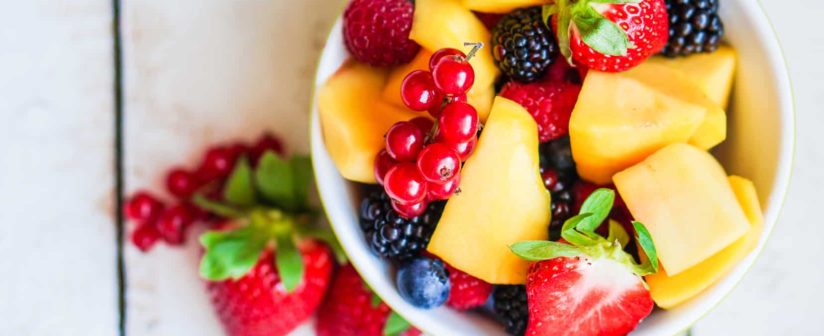So what’s the deal with sugar in fruit? You’ve definitely heard the buzzword fructose in the health world (maybe the dreaded additive high fructose corn syrup), and recognize that too much sugar can have negative effects on your body. But experts say it might be less about the fact that you’re consuming fructose, the sugar in fruit, and more about how much. Here’s the scoop on how you should view the sugar in fruit and how to incorporate it healthfully into your diet.
The sugar in fruit breaks down into glucose and fructose, just like sugars in other foods such as cakes and cookies. This can be problematic for certain segments of the population, particularly diabetics, who must pay strict attention to the amount of carbohydrates in their diets. However, that doesn’t mean you should avoid fruit when consuming a healthy diet — for most people, the benefits of fruit outweigh the risk of consuming the sugar it contains.
Nutritional Profile of Fruit
Although fruit contains sugar, it also offers a variety of healthy nutrients, too, such as vitamins, minerals, antioxidants, water and, most importantly, fiber. The fiber slows the absorption of sugar into your body, meaning you don’t get the spike in blood sugar that comes with consuming sugar in other forms. Additionally, fruit typically contains less sugar by volume when compared to sugary treats such as ice cream, according to registered dietitian Joy Dubost.
High- and Low-Sugar Fruits
If you’re watching your consumption of sugar, some fruits are better than others. Apples, bananas, cherries, grapes, pineapples, mangoes, kiwi and pears are all considered high-sugar fruits with more than 10 grams per serving, according to The Paleo Diet website. Strawberries, papaya, guava, grapefruit and figs all contain less than 7 grams of sugar per serving.
Dried Fruit
Per gram, dried fruit is richer in vitamins and minerals than raw fruit, but it is also higher in sugar. With many fruits consisting mostly of water, the dehydration process concentrates their other components. A medium, raw banana weighing 118 grams has 14 grams of sugar, but a 118-gram serving of banana chips has 42 grams of sugar. After processing, some dried fruit, including pineapple, is rolled in granulated sugar, making it comparable to candy in sugar content.
Diabetes
According to the American Diabetes Association, the natural sugar in fruit does not pose a danger to diabetics. With the exception of pineapple and some types of melon, most raw fruits have a low glycemic index. The ADA recommends choosing fresh or frozen fruit. If you buy canned fruit, choose a product packaged in juice rather than syrup, to ensure that it does not contain a large amount of added sugar.
Food Companies and Refined Sugar
In drawing us to fruit, our sweet tooth was designed to support our long-term health; however, food companies, in an effort to make their products more desirable, use this natural affinity for sweets in a way that brings harm to us. While the simple sugars from whole fruit support human health, the refined, or extracted, sugars do not. The refining process removes the water, fiber, and virtually every other nutrient and element of the food. What’s left behind is sugar and only sugar—not the package it belongs in. This extraction is more calorie dense and thus overstimulating to our pleasure senses. Even worse, food manufacturers add these highly concentrated, palate-pleasing sugars to already stimulating and disease-causing high-fat foods.
Embrace Sugar in Fruit and Whole Foods
There’s a point in all this that’s not frequently made in the media or by health professionals: Sugar as it occurs in whole foods is not an issue; in fact, it is necessary and should be embraced. It’s a problem only when it is extracted from its natural package and used to excess. Also, the foods highest in added sugars frequently are higher in added fats, sodium, refined flours, and animal products, making them unhealthy for a variety of reasons and not just because of the added sugars.
Your Fruit-Eating Action Plan
Cut the empty calories, but stop worrying about fruit. “Berries and fruits that you consume with the skin tend to be higher in fiber, which is important because a lot of Americans need more fiber,” Blechman says. Fiber has some amazing benefits, like the ability to regulate your digestion and keep your energy up. “Plus, fiber can help slow down the rate at which sugar enters your bloodstream.”
To keep yourself full and to make it to the gym at the end (or beginning) of your day, fiber and protein are the magic combo. Try swirling some nut butter into Greek yogurt and adding some fibrous fresh fruits to the mix, or throwing a handful of berries into cottage cheese for the same filling protein-fiber effect, Blechman says. While you should always double check the label on your energy bars to flag excess sugar content, experts agree that fruit and vegetables, regardless of fructose content, are what you want to snack on.


